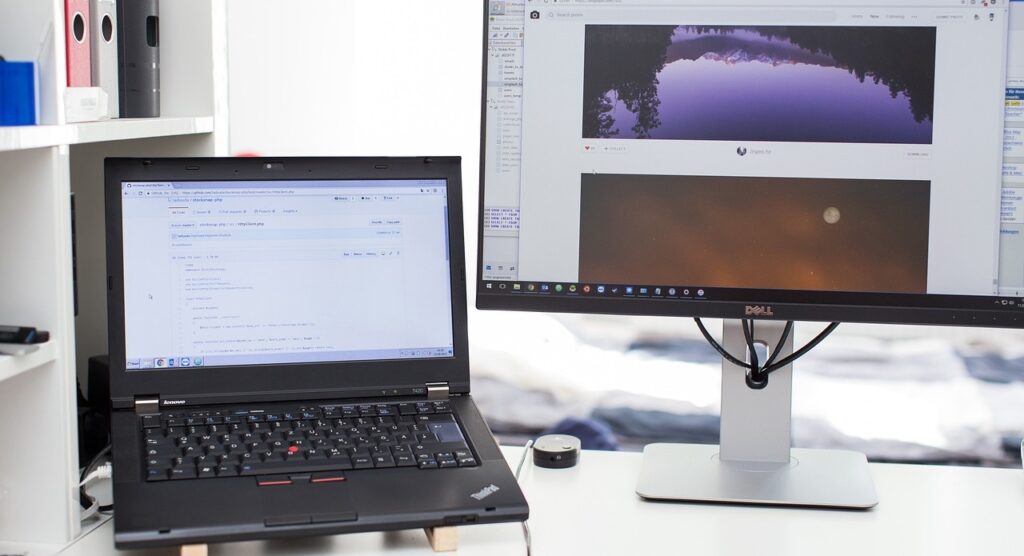
Cyber threats have become a pervasive concern in today’s digital age, where the internet plays a central role in our lives. For a web designer Dubai, it is crucial to understand the fundamentals of cyber security to protect websites and the sensitive data they handle.
So, this article aims to shed light on the importance of cyber security in website design and provide actionable insights for web designers to enhance the security of their projects.
Cyber Security:
Cyber security refers to the practice of protecting computer systems, networks, and data from unauthorized access, damage, or theft. It encompasses various measures, including technologies, processes, and best practices, to mitigate potential risks posed by cyber threats such as hacking, data breaches, malware, and phishing attacks.
However, the role of cyber security extends beyond simply implementing firewalls or antivirus software. It involves a comprehensive approach to safeguarding digital assets.
Reasons Why Cyber Security Website Design is A Must:
Below are some critical reasons why Dubai web designers must consider cyber security while designing websites.
1. Protect User Data:
A web designer is responsible for ensuring user data’s confidentiality, integrity, and availability. Incorporating robust security measures into a website design helps them safeguard sensitive information.
It includes personal details, login credentials, and financial data from falling into the wrong hands. By implementing encryption protocols, secure data storage practices, and access controls, they can minimise the risk of data breaches and enhance user trust in websites.
2. Mitigate DDoS Attacks:
Distributed Denial of Service (DDoS) attacks can disrupt website availability by overwhelming servers with excessive traffic. A web designer Dubai should comprehend the basics of DDoS protection that is vital to maintain uninterrupted access to a website.
By leveraging content delivery networks (CDNs), load balancers, and intrusion detection systems, they can effectively mitigate the impact of DDoS attacks. It will ensure the designed website remains accessible to legitimate users.
3. Keep Software and Plugins Updated:
Outdated software and plugins are common entry points for cyber-attacks. Web designers must regularly update the content management system (CMS), themes, and plugins used in website development.
These updates often include security patches that address vulnerabilities discovered by developers. By staying current with the latest releases, they can effectively reduce the risk of exploitation and maintain a secure website environment.
4. Implement Strong Password Policies:
Weak passwords pose a significant risk to website security. Web designers should advocate for implementing strong password policies on the websites they create. Encourage users to choose unique, complex passwords and enforce password length and complexity requirements.
Additionally, consider implementing account lockouts and password reset procedures to prevent brute-force attacks.
Things Every Web Designer Should Know About Cyber Security:
Here are some essential aspects that every Freelance web designer in Dubai should know.
Implement Secure Coding Practices:
When it comes to web development, secure coding practices are paramount. Website designers should strive to write clean, well-structured code free from vulnerabilities.
Adhering to industry best practices can significantly reduce the risk of exploiting their website by malicious actors.
Regularly Update Software and Plugins:
A web designer in Dubai should know that keeping software and plugins up to date is crucial for maintaining a secure website. Outdated software often contains vulnerabilities that hackers can exploit.
Regularly check for updates and install them promptly to patch any security flaws and protect their websites.
Use Strong Passwords and Authentication:
Passwords serve as the first line of defense against unauthorized access. Using strong, complex passwords for all user accounts and backend systems is imperative.
Implement two-factor authentication (2FA) whenever possible to add an extra layer of security. Doing so can significantly reduce the risk of a successful breach.
Employ Secure File Transfer Protocols:
Use secure file transfer protocols when uploading files or transferring data to the server. It includes Secure File Transfer Protocol (SFTP) or Hypertext Transfer Protocol Secure (HTTPS).
These protocols encrypt data during transmission, preventing it from being intercepted by attackers.
Validate and Sanitise User Input:
One of the most common attack vectors is through user input. Hackers can exploit vulnerabilities in websites by injecting malicious code through forms or other input fields.
Validate and sanitise all user input to prevent cross-site scripting (XSS) and SQL injection attacks.
Implement Website Backup and Recovery Plans:
Data loss can occur for various reasons, including cyber-attacks, hardware failures, or human error. Implementing regular website backups and having a recovery plan in place can help mitigate the impact of such incidents.
Thus, regularly back up the website’s data and test the restoration process to make sure its effectiveness.
Utilise Secure Web Hosting:
Choosing a reliable and secure web hosting provider is mandatory for the overall security of a website.
Ensure the hosting provider follows strict security protocols, offers regular backups, and has measures to protect against DDoS attacks. Research and select a hosting service that prioritizes the security of its customers.
Regularly Monitor and Analyse Website Logs:
Monitoring the website logs is essential for identifying suspicious activities or potential security breaches. Regularly review log files for unusual patterns or unauthorized access attempts.
Implementing an intrusion detection system (IDS) or security information and event management (SIEM) can help automate this process.
Stay Updated on Current Threats and Vulnerabilities:
Cyber threats are constantly evolving, and new vulnerabilities are discovered regularly. Stay informed about the latest security trends and vulnerabilities through reputable sources.
To stay current, subscribe to security newsletters, participate in forums, and attend relevant conferences. A web designer Dubai can proactively protect their websites and their users by being aware of emerging threats.
Educate Website Users about Security Best Practices:
Web designers have a unique opportunity to educate website users about security best practices.
Incorporate user-friendly elements like tooltips or pop-ups to guide users on safe browsing habits, the importance of strong passwords, and the potential risks of sharing sensitive information online. By raising awareness, you empower users to take an active role in safeguarding their online security.
Wrapping Up!
A web designer in Dubai should understand and implement best practices for secure web design as it is essential for safeguarding websites from cyber threats. By following guidelines, they can significantly enhance the security of the websites they design. Remember, incorporating these practices protects users’ sensitive information and helps them maintain the trust and reputation of their clients and their online businesses.


